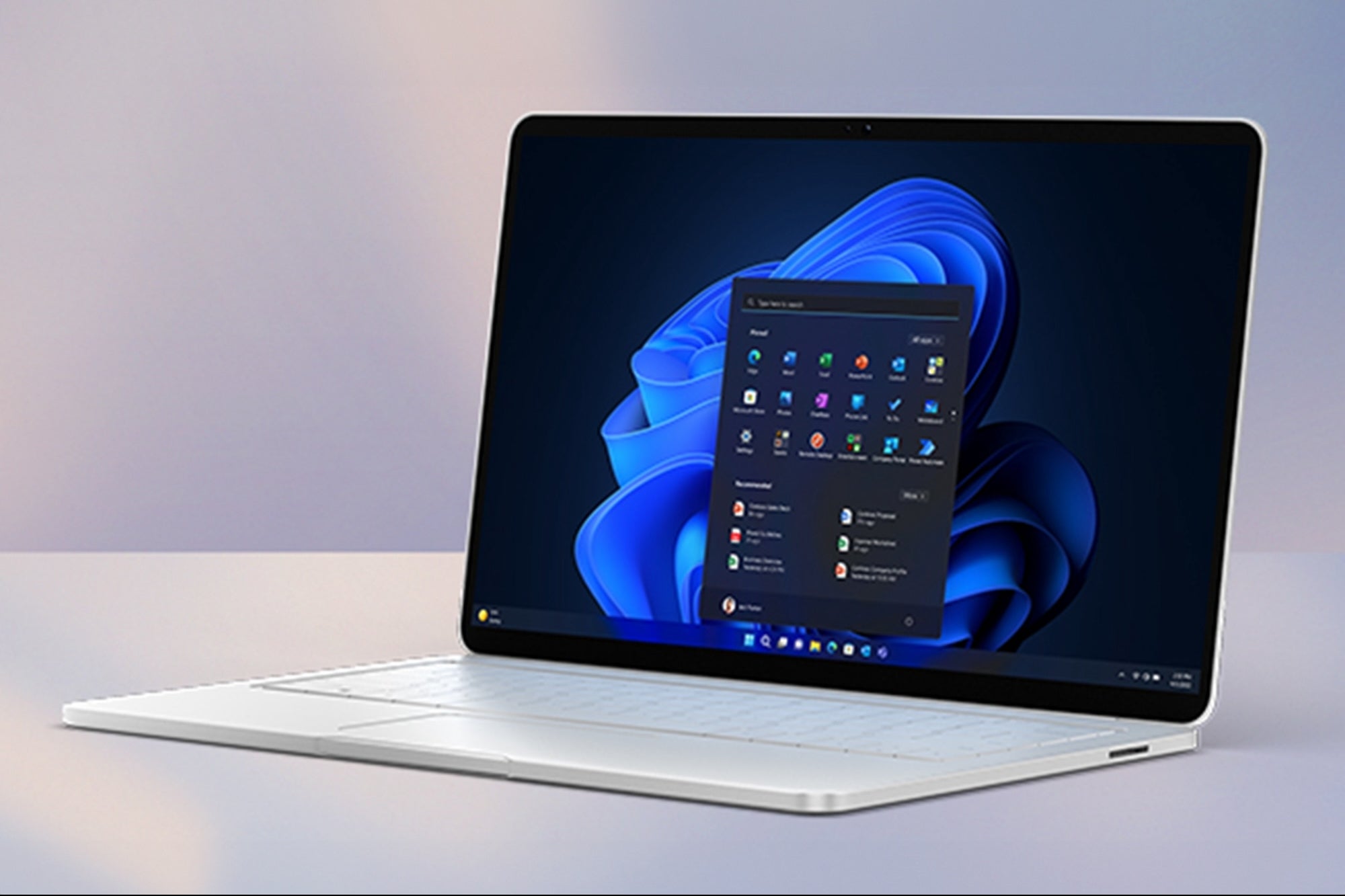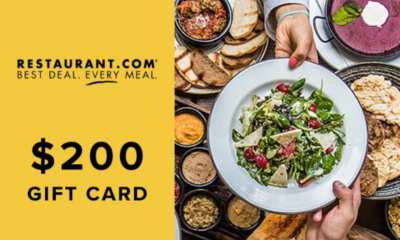AFFILIATE MARKETING
This Is What’s Driving the Next Wave of Growth in Affiliate Marketing

Opinions expressed by Entrepreneur contributors are their own.
The affiliate industry today is growing rapidly, but it’s not simply from the overall increase in consumers shifting their buying habits to ecommerce. Affiliate marketing has long been a staple in most online retailers’ marketing mix, and it’s estimated that affiliate marketing currently accounts for 16% of all online purchases in the U.S. and Canada. Every year, it grows about another 10% according to Statista, and is expected to reach $8.2 billion in 2022.
Now, loyalty and cashback rewards programs built upon the existing “infrastructure” of the affiliate industry are spurring new growth in the affiliate channel.
How affiliate marketing laid the foundation for cashback and loyalty rewards
In the affiliate-marketing advertising model, online retailers pay fees in the form of commissions, most often as a percentage of sales, for referrals from “publisher” web sites. This is also commonly known as revenue sharing, or “rev share.”
Publishers come in many shapes and sizes, including content sites on a specific topic, deal-finder sites, blogs in niche verticals, social-media influencers and more. These publishers promote links to retailer sites in their content in the hopes of driving their audience to those retailers and earning sales commissions from the traffic they drive.
Related: One Way to Start a Lucrative Career From Home That Could Pay $50,000 in a Day
Affiliate-marketing networks such as CJ, Impact, ShareASale and others provide retailers with technology platforms that track referrals from publishers in order to attribute the purchases that result from those referrals to the appropriate publisher and convey rev-share payments from merchants to publishers.
In effect, affiliate networks serve as marketplaces connecting publishers with online retailers, enabling them to create marketing relationships with each other. Publishers join the network so they can access online retailers that are willing to pay them for sales driven by their audience. Online retailers join the network so they can cost-effectively acquire customers and drive incremental sales.
How cashback and loyalty programs run on affiliate networks
The existing affiliate-network tracking platforms provide incredibly efficient infrastructure to power rewards and loyalty programs. Rewards platform and solutions providers are now publishers that participate in affiliate programs with rev-share commissions paid on sales by online retailers. But, unlike traditional affiliate publishers that keep the commissions, rewards and loyalty programs offer part or all of the commissions earned back to consumers (e.g. their audience) in the form of shopping rewards, such as cash back.
These types of cashback rewards programs, powered by the existing affiliate infrastructure, have exploded in popularity in the last few years. Examples of these programs include PayPal’s Honey, Capital One Shopping, Microsoft Rewards, and Acorns Earn, among others.
Related: 3 Secret Reasons Why Your Brand Needs a Rewards Program
Why should brands consider adding cashback and rewards programs to their affiliate-marketing channel?
Affiliate-powered coupon and rewards programs benefit rewards providers and consumers in two ways:
-
Rewards program providers see stronger brand loyalty, better customer retention, lower cost of user acquisition and increased revenue.
Online retailers also benefit directly in several ways.
Increasing conversion rate and reducing shopping cart abandonment
Activating cashback rewards during an online purchase increases the likelihood of the customer completing that purchase. When a shopper activates a cashback incentive at the start of a shopping journey, it acts as a magnet, drawing the customer from the first click to a converted sale.
Globally, the average ecommerce conversion rate is 3.29% (the percent of ecommerce website visitors that complete a purchase). However, according to data from Wildfire Systems, when consumers activate cashback rewards during their online shopping trip, over 15% of them complete the transaction — that’s a 6-10 times increase.
Boosting average order value
The typical order value for retailers in the Wildfire merchant network was historically in the $60 to $70 range when consumers made purchases after visiting the retailers’ site via social-media platforms such as Pinterest and Facebook. But, in Wildfire’s experience, average order value climbs to $130 when customers activate cashback during an online shopping experience. The psychology of “getting a bargain” is at play here.
According to data from CJ, a leading affiliate network, publishers in the loyalty and rewards vertical drive substantially larger transaction size, with 25% higher average order value compared to other publishers in the CJ network based upon the past two years of data.
Related: Here Are the Most Valuable Hotel Rewards Programs in 2022
Improving return on ad spend (ROAS) by shifting budgets
The price of cost-per-click (CPC) and cost-per-1000-impressions (CPM) advertising continues to rise. In fact, pricing in these channels is at an all-time high, according to Tinuiti, a performance marketing agency, and it is becoming increasingly difficult to target social and digital advertising given the evolving legislation relating to privacy and third-party cookies. Furthermore, advertisers’ trust in CPC advertising continues to erode due to the prevalence of click-fraud and bots. The cybersecurity firm CHEQ estimates that bots and fake users now make up a whopping 40% of all online traffic, which is directly detrimental to ROAS for CPC- and CPM-based advertising.
This combination of factors is pushing online retailers to shift budget towards the affiliate channel due to its performance-based model of paying publishers a percentage of the actual ecommerce sale generated. By shifting spend further into the purchase funnel, affiliate marketing presents one of the highest ROAS and lowest risk components of advertisers’ marketing mix. In fact, CJ also noted that in 2021, loyalty and rewards affiliate publishers in its network earned a 34% higher ROAS than other publishers.
Rewards programs have entered the mainstream, and consumers are not just growing accustomed to these benefits, they’re increasingly expecting them. This is a win-win-win for everyone in the ecosystem: Consumers benefit from rewards and discounts, retailers benefit from higher sales conversion and lower ROAS, and the services that offer rewards programs benefit from retention, user acquisition and new revenue streams. You can expect to see a proliferation of rewards and loyalty programs in the form of online-shopping companions as these programs graduate from being differentiators to becoming table stakes.
Source link
AFFILIATE MARKETING
Protect Your Business Computer From Hackers and Trackers with This $70 VPN Deal
Disclosure: Our goal is to feature products and services that we think you’ll find interesting and useful. If you purchase them, Entrepreneur may get a small share of the revenue from the sale from our commerce partners.
Browsing online and using public networks can make your computer vulnerable to a wide range of hackers and trackers. For entrepreneurs running a business, being bogged down or having your team members bogged down by dangerous, cost-threatening disruptions like these is unacceptable.
A good way to keep you and your team safe and working fast while online is with a reliable VPN subscription. To help, this Windscribe VPN Pro Plan three-year subscription is available for $69.97 (reg. $207) through May 12th at 11:59 p.m. PT.
Windscribe can be a great VPN subscription for entrepreneurs and small businesses because it supports unlimited devices. Going beyond typical VPN services, Windscribe offers itself as a desktop application and browser extension. All-in-all, it can be used to unblock websites, block ads, and keep you safe without expecting you to configure a wide range of complicated settings.
Windscribe’s no-logging policy will keep your team safe, and its high-end encryption methods will keep their data safe from hackers and trackers.
This service runs on a system of servers in more than 69 countries and 112 cities. It uses something called split tunneling, which allows users to choose which apps use the VPN and which ones don’t. This is a great feature for teams with remote employees who toggle between work and personal programs on the same screen.
Windscribe is rated Very Good on Tom’s Guide and 4/5 stars and above on Tech Radar, PC World, and G2.
Don’t forget that this Windscribe VPN Pro Plan three-year subscription is available for the best-of-web price of $69.97 (reg. $207) only through May 12th at 11:59 p.m. PT.
StackSocial prices subject to change.
AFFILIATE MARKETING
Get Microsoft Office Plus Windows 11 Pro for $70 This Week Only

Disclosure: Our goal is to feature products and services that we think you’ll find interesting and useful. If you purchase them, Entrepreneur may get a small share of the revenue from the sale from our commerce partners.
When you run a company, you need every basic tool available to streamline your communications, content creation, and sales abilities. You also need to operate on a computer outfitted with a capable and robust operating system designed to support modern productivity.
Through 11:59 p.m. PT on May 12th only, you can get The Ultimate Microsoft Office Professional 2021 for Windows: Lifetime License + Windows 11 Pro Bundle on sale for just $69.97 (reg. $438).
Known by many for a long time, Microsoft Office Professional features a suite of apps designed to help you write, present, organize, email, and more. Unlike with Microsoft 365, there are no additional monthly fees with Office. These are the ones included with this lifetime license:
- Access
- Publisher
- OneNote
- Teams
- Outlook
- PowerPoint
- Excel
- Word
This bundle also includes Windows 11 Pro, the latest Microsoft operating system, which offers advanced security features and productivity elements that can help keep any modern professional on task and safe.
On the security front, the system uses tools like Smart App Control, biometric logins, and TPM 2.0 to help keep you protected. When it comes to productivity, it offers tools like improved voice typing and the support of AI-powered tools like Microsoft Copilot. And because Office includes Teams, you get a hub of communication for your team.
This deal has several 5/5 star ratings on the Entrepreneur Store, and Windows 11 Pro is rated 4/5 stars on PC Magazine and TechRadar.
Through 11:59 p.m. PT on May 12th only, you can get The Ultimate Microsoft Office Professional 2021 for Windows: Lifetime License + Windows 11 Pro Bundle on sale for just $69.97 (reg. $438).
StackSocial prices subject to change.
AFFILIATE MARKETING
8 Common SEO Myths Debunked

Opinions expressed by Entrepreneur contributors are their own.
In today’s digital landscape, a strong Search Engine Optimization (SEO) strategy is crucial for businesses to thrive. SEO helps websites rank higher in search engine results pages (SERPs), driving organic traffic and boosting online visibility.
However, the world of SEO is also riddled with myths and misconceptions that can lead businesses astray. Let’s debunk some of the most common SEO myths and separate fact from fiction.
Myth 1: More keywords mean better rankings
Gone are the days of stuffing your content with every keyword imaginable. Google’s algorithms have shifted towards natural language processing (NLP), prioritizing content quality and user experience above keyword density. While keywords remain important, focusing on keyword intent and strategic placement throughout your content is far more beneficial than keyword quantity.
Fact: Research relevant keywords related to your target audience and their search queries. Use those keywords naturally within your content, focusing on providing informative and engaging information that fulfills user intent.
Related: Ultimate SEO Guide On How to Get 100,000 Visits Per Month From Google
Myth 2: Meta tags don’t matter anymore
While meta tags may not hold the same weight they once did, they’re far from irrelevant. Title tags and meta descriptions are like billboards for your content, serving as the first impression users see in search results. Compelling and informative meta tags can significantly improve click-through rates (CTR) and user engagement.
Fact: Craft clear, concise, and keyword-rich title tags that accurately reflect your content. Similarly, write engaging meta descriptions that entice users to click. Keep your title tag under 60 characters and your meta description around 160 characters to ensure they display fully in search results.
Myth 3: Social media directly influences SEO rankings
Social media shares and likes don’t directly translate into higher search rankings. However, social media plays a vital role in online visibility and brand awareness. Strong social media engagement can drive traffic back to your website, indirectly contributing to SEO by increasing user engagement and potentially influencing click-through rates.
Fact: Utilize social media platforms to share your content and connect with your audience. Encourage social media followers to share your content further, expanding your reach and driving more visitors to your website.
Myth 4: Backlinks are no longer relevant
Backlinks, or links from other websites to yours, remain a cornerstone of SEO. High-quality backlinks from reputable websites act as a vote of confidence for your content, signaling to search engines that your site is trustworthy and authoritative. This can significantly boost your domain authority and improve search rankings for relevant keywords.
Fact: Focus on acquiring backlinks from relevant websites within your niche. Create high-quality content that others will find valuable and link to naturally. Avoid spammy link-building tactics, as they can actually harm your SEO efforts.
Related: 9 SEO Tips to Help You Rank No. 1 on Google in 2024
Myth 5: SEO is a one-time effort
If you think you can optimize your website once and reap the benefits forever, think again. Search engines constantly update their algorithms, and SEO is an ongoing process. To maintain strong search rankings, you need to stay on top of SEO best practices.
Fact: Regularly update your website content with fresh, informative, and engaging material. Review your keyword strategy periodically and adapt to changes in the search landscape. Stay updated on the latest SEO trends and best practices to ensure your website stays relevant.
Myth 6: Mobile optimization doesn’t matter
With the majority of web searches now conducted on mobile devices, having a website that’s optimized for mobile browsing is no longer optional. Search engines prioritize mobile-friendly websites in search results, ensuring users have a positive experience when accessing your content.
Fact: Make sure your website has a responsive design that adapts seamlessly to different screen sizes and devices. Ensure fast loading times and easy navigation for mobile users.
Myth 7: Paid advertising can replace SEO
While paid advertising (PPC) can be a valuable tool to drive immediate traffic, it’s not a replacement for SEO. The benefits of SEO are long-term and sustainable, with organic traffic continuing to flow to your website even without ongoing ad spend.
Fact: Develop a strong SEO strategy alongside your paid advertising efforts for a well-rounded digital marketing approach. Organic traffic can provide a more cost-effective source of website visitors in the long run.
Myth 8: Focusing on local SEO doesn’t matter if I sell online
Even for e-commerce businesses, neglecting local SEO can be a missed opportunity. If you have a physical location or offer local delivery, optimizing your website for local search terms can significantly increase your visibility to potential customers in your area.
Fact: Claim and manage your Google My Business listing to ensure your business information is accurate and up-to-date. Utilize location-specific keywords throughout your website content and target local search queries.
Conclusion
Staying informed about SEO best practices is crucial for optimizing your website and achieving success in the digital marketplace. Don’t be swayed by outdated myths or quick-fix SEO schemes. Focus on creating high-quality content, building a strong backlink profile, and staying updated on the latest SEO trends.
-

 MARKETING6 days ago
MARKETING6 days agoA Recap of Everything Marketers & Advertisers Need to Know
-

 PPC5 days ago
PPC5 days agoHow the TikTok Algorithm Works in 2024 (+9 Ways to Go Viral)
-

 SEO5 days ago
SEO5 days agoBlog Post Checklist: Check All Prior to Hitting “Publish”
-

 SEO4 days ago
SEO4 days agoHow to Use Keywords for SEO: The Complete Beginner’s Guide
-

 MARKETING4 days ago
MARKETING4 days agoHow To Protect Your People and Brand
-

 SEARCHENGINES6 days ago
SEARCHENGINES6 days agoGoogle Started Enforcing The Site Reputation Abuse Policy
-

 PPC6 days ago
PPC6 days agoHow to Craft Compelling Google Ads for eCommerce
-

 MARKETING5 days ago
MARKETING5 days agoElevating Women in SEO for a More Inclusive Industry
















You must be logged in to post a comment Login